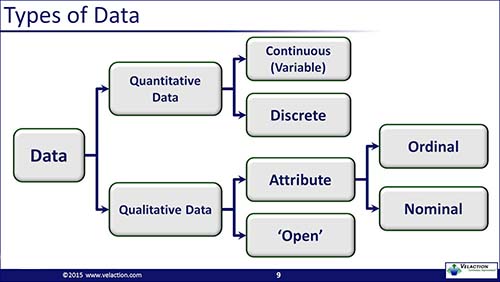| 🔍 > Lean Terms Directory |
Nominal Data
Nominal data is a type of qualitative data. It contains a set of possible values that has no measurable sequence to them.
For example, “favorite pet” would be nominal data set. The values might include dog, cat, snake, frog, and horse. While most people would agree that dogs rank much higher than cats, for the purpose of data analysis, there is not an inherent sequence to these values.


Nominal data is the most basic form of data. In some explanations of data types, you will see them organized by levels, with this type ranked as the lowest level.
The benefit of nominal data is that it is easy to collect. The downside is that there is very little analysis you can do with nominal data. Because there is no sequencing, even basic measures of central tendency such as median or mean are unavailable.
Mode (the most frequently occurring value) can be determined, however. You can also depict the data set as a percent of occurrence. For example, in the “favorite pets” data, you might see “dog” (the mode) occurring as the favorite pet 81% of the time, “snake” 5%, “cat” 1%, etc. with all responses totaling up to 100%.

This type of data can be tricky. If you give a prescribed set of possible values, you limit the responses in your observations. (An observation is each individual thing you look at, be it a person, car, company, etc.) A person who likes lizards, for example, might not have their response available to them in the list of choices.
But if you leave the category open to any choice, you may run into a much larger range of responses than you were anticipating.
Many data collectors deal with this by including the catch-all category “Other.” The challenge here is that this can often end up as the mode and conceals what is really happening with your data.
0 Comments